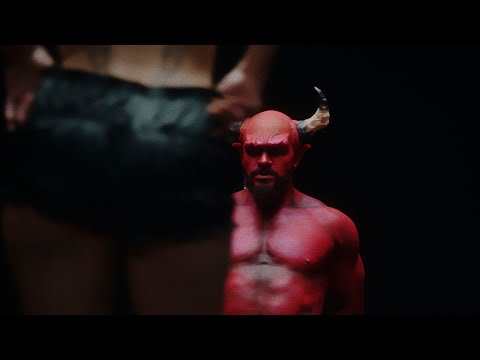Shea Serrano’s book headlines great year for Latino sports books
When Fernando Mendoza won the Heisman Trophy this weekend with another Latino finalist looking on from the crowd, the Cuban-American quarterback did more than just become the first Indiana Hoosier to win college football’s top prize, and only the third Latino to do so. He also subtly offered a radical statement: Latinos don’t just belong in this country, they’re essential.
At a time when questions swirl around this country‘s largest minority group that cast us in a demeaning, tokenized light — how could so many of us vote for Trump in 2024? Why don’t we assimilate faster? Why does Supreme Court justice Brett Kavanaugh think it’s OK for immigration agents to racially profile us? — the fact that two of the best college football players in the country this year were Latino quarterbacks didn’t draw the headlines they would’ve a generation ago. That’s because we now live in an era where Latinos are part of the fabric of sports in the United States like never before.
That’s the untold thesis of four great books I read this year. Each is anchored in Latino pride but treat their subjects not just as sport curios and pioneers but great athletes who were and are fundamental not just to their professions and community but society at large.

Shea Serrano writing about anything is like a really great big burrito — you know it’s going to be great and it exceeds your expectations when you finally bite into it, you swear you’re not going to gorge the thing all at once but don’t regret anything when you inevitably do. He could write about concrete and this would be true, but his latest New York Times bestseller (four in total, which probably makes him the only Mexican American author with that distinction) thankfully is instead about his favorite sport.
“Expensive Basketball” finds Serrano at his best, a mix of humblebrag, rambles and hilarity (of Rasheed Wallace, the lifelong San Antonio Spurs fan wrote the all-star forward “would collect technical fouls with the same enthusiasm and determination little kids collect Pokémon cards with.”) The proud Tejano’s mix of styles — straight essays, listicles, repeated phrases or words trotted out like incantations, copious footnotes — ensures he always keeps the reader guessing.
But his genius is in noting things no one else possibly can. Who else would’ve crowned journeyman power forward Gordon Hayward the fall guy in Kobe Bryant’s final game, the one where he scored 60 points and led the Lakers to a thrilling fourth-quarter comeback? Tied a Carlos Williams poem that a friend mistakenly texted to him to WNBA Hall of Famer Sue Bird? Reminded us that the hapless Charlotte Hornets — who haven’t made it into the playoffs in nearly a decade — were once considered so cool that two of their stars were featured in the original “Space Jam?” “Essential Basketball” is so good that you’ll swear you’ll only read a couple of Serrano’s essays and not regret the afternoon that will pass as quickly as a Nikola Jokic assist.

“Mexican American Baseball in the South Bay”
(Gustavo Arellano/Los Angeles Times)
I recommended “Mexican American Baseball in the South Bay” in my regular columna three years ago, so why am I plugging its second edition? For one, the audacity of its existence — how on earth can anyone justify turning a 450-page book on an unheralded section of Southern California into an 800-page one? But in an age when telling your story because no one else will or will do a terrible job at it is more important than ever, the contributors to this tome prove how true that is.
“Mexican American Baseball in the South Bay” is part of a long-running series about the history of Mexican American baseball in Southern California Latino communities. What’s so brilliant about this one is that it boldly asserts the history and stories of a community that too often get overlooked in Southern California Latino literature in favor of the Eastsides and Santa Anas of the region.
As series editor Richard A. Santillan noted, the reaction to the original South Bay book was so overwhelmingly positive that he and others in the Latino History Baseball Project decided to expand it. Well-written essays introduce each chapter; long captions for family and team photos function as yearbook entries. Especially valuable are newspaper clippings from La Opinión that showed the vibrancy of Southern Californians that never made it into the pages of the English-language press.
Maybe only people with ties to the South Bay will read this book cover to cover, and that’s understandable. But it’s also a challenge to all other Latino communities: if folks from Wilmington to Hermosa Beach to Compton can cover their sports history so thoroughly, why can’t the rest of us?

(University of Colorado Press)
One of the most surprising books I read this year was Jorge Iber’s “The Sanchez Family: Mexican American High School and Collegiate Wrestlers from Cheyenne, Wyoming,” a short read that addresses two topics rarely written about: Mexican American freestyle wrestlers and Mexican Americans in the Equality State. Despite its novelty, it’s the most imperfect of my four recommendations. Since it’s ostensibly an academic book, Iber loads the pages with citations and references to other academics to the point where it sometimes reads like a bibliography and one wonders why the author doesn’t focus more on his own work. And in one chapter, Iber refers to his own work in the first person — profe, you’re cool but you’re not Rickey Henderson.
“The Sanchez Family” overcomes these limitations by the force of its subject, whose protagonists descend from Guanajuato-born ancestors that arrived to Wyoming a century ago and established a multi-generational wrestling dynasty worthy of the far-more famous Guerrero clan. Iber documents how the success of multiple Sanchez men on the wrestling mat led to success in civic life and urges other scholars to examine how prep sports have long served as a springboard for Latinos to enter mainstream society — because nothing creates acceptance like winning.
“In our family, we have educators, engineers and other professions,” Iber quotes Gil Sanchez Sr. a member of the first generation of grapplers. “All because a 15-year-old boy [him]…decided to become a wrestler.”
Heard that boxing is a dying sport? The editors of “Rings of Dissent: Boxing and Performances of Rebellion” won’t have it. Rudy Mondragón, Gaye Theresa Johnson and David J. Leonard not only refuse to entertain that idea, they call such critiques “rooted in racist and classist mythology.”

(University of Illinois Press)
They then go on to offer an electric, eclectic collection of essays on the sweet science that showcases the sport as a metaphor for the struggles and triumphs of those that have practiced it for over 150 years in the United States. Unsurprisingly, California Latinos earn a starring role. Cal State Channel Islands professor José M. Alamillo digs up the case of two Mexican boxers denied entry in the United States during the 1930s, because of the racism of the times, digging up a letter to the Department of Labor that reads like a Stephen Miller rant: “California right now has a surplus of cheap boxers from Mexico, and something should be done to prevent the entry of others.”
Roberto José Andrade Franco retells the saga of Oscar De La Hoya versus Julio Cesar Chávez, landing less on the side of the former than pointing out the assimilationist façade of the Golden Boy. Mondragón talks about the political activism of Central Valley light welterweight José Carlos Ramírez both inside and outside the ring. Despite the verve and love each “Rings of Dissent” contributors have in their essays, they don’t romanticize it. No one is more clear-eyed about its beauty and sadness than Mondragón’s fellow Loyola Marymount Latino studies profe, Priscilla Leiva. She examines the role of boxing gyms in Los Angeles, focusing on three — Broadway Boxing Gym and City of Angels Boxing in South L.A, and the since-shuttered Barrio Boxing in El Sereno.
“Efforts to envision a different future for oneself, for one’s community, and for the city are not guaranteed unequivocal success,” she writes. “Rather, like the sport of boxing, dissent requires struggle.”
If those aren’t the wisest words for Latinos to embrace for the coming year, I’m not sure what is.










